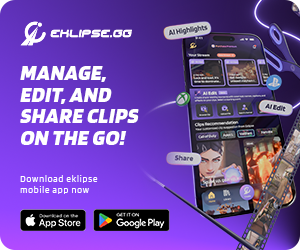
Level Up Your Marvel Rivals Gameplay
Capture your epic wins, clutch moments, and even hilarious fails with Eklipse. Easily create and share highlight reels with your friends—even if you're not streaming!
Learn MoreIf you have a lot of content but don’t know how to effectively get it in front of your audience, then you need a great content plan. Only 40% of content creators have documented a content strategy, so it’s important to establish or revisit your own plan.
In this article, we’ll explain what a content plan is and how to create your own strategy. Let’s dive in!

What is a content plan?

A content plan is a documented strategy that outlines the who, what, when, where, why, and how of your content marketing efforts. It answers questions such as who is creating the content, what kind of content, when it will be published, where it will be distributed, why you are doing content marketing, and how you will promote and analyze the results.
More on Eklipse Blog >> Essential Social Media Metrics to Track For Content Creators
Why do content creators need a content plan?
Without a plan, content publication is done haphazardly. If you’ve ever found yourself running out of things to post, unsure of what content works best on different channels, not knowing your audience’s preferences, realizing you haven’t posted, or struggling to come up with content ideas, then you need a content strategy.
A strategy provides a framework for your content efforts and allows you to use data to ensure its effectiveness. It also helps align different departments within your company and saves time by having content prepared and scheduled in advance.
10 steps to creating an effective content plan
- Set goals and key performance indicators (KPIs): Clearly define what you want to achieve with your content and identify metrics to measure success.
- Decide on target audiences: Determine your target audiences and tailor your content topics and types to each one.
- Audit your current content: Assess your existing content by documenting topics, types, channels, and performance to identify trends and areas for improvement.
- Identify the best content channels: Focus on the channels where you already have an engaged presence and analyze your website analytics to understand referral sources.
- Decide on content types: Consider different content formats such as photos, videos, blog posts, podcasts, infographics, and user-generated content based on your account funnel stage and target audience.
- Determine budget, tools, and resources: Assess your available resources, including budget, tools, and staff or freelancers, to support your content efforts.
- Create a content calendar: Use a content calendar to plan and track your content, including topics, status, distribution, and performance.
- Create content: Develop and curate content based on your chosen types and channels.
- Publish and promote: Use a tool like Sprout Social to schedule and publish your content across multiple channels, and repurpose successful content.
- Measure results: Analyze data from tools like Google Analytics and social media analytics to assess the performance of your content and adjust your strategy accordingly.
Conclusion
Now that you understand the steps, it’s time to create your own content plan and strategy. In addition to the 10 tips explained above, you can find templates and worksheets to assist you in the process. Good luck!
Maximize your Black Ops 6 rewards—Create highlights from your best gameplay with with Eklipse
Eklipse help streamer improve their social media presence with AI highlights that clip your Twitch / Kick streams automatically & converts them to TikTok / Reels / Shorts
🎮 Play. Clip. Share.
You don’t need to be a streamer to create amazing gaming clips.
Let Eklipse AI auto-detect your best moments and turn them into epic highlights!
Limited free clips available. Don't miss out!
